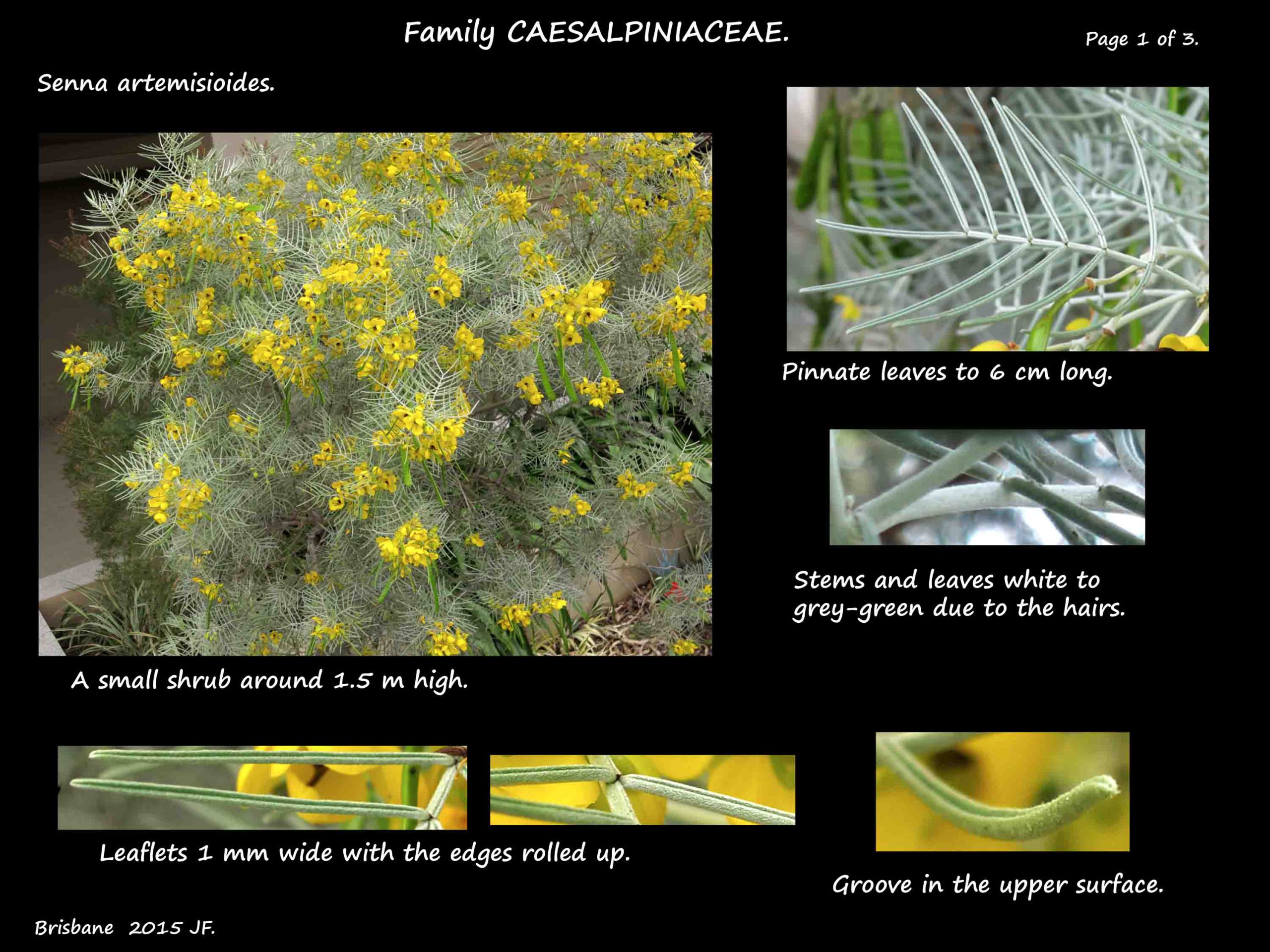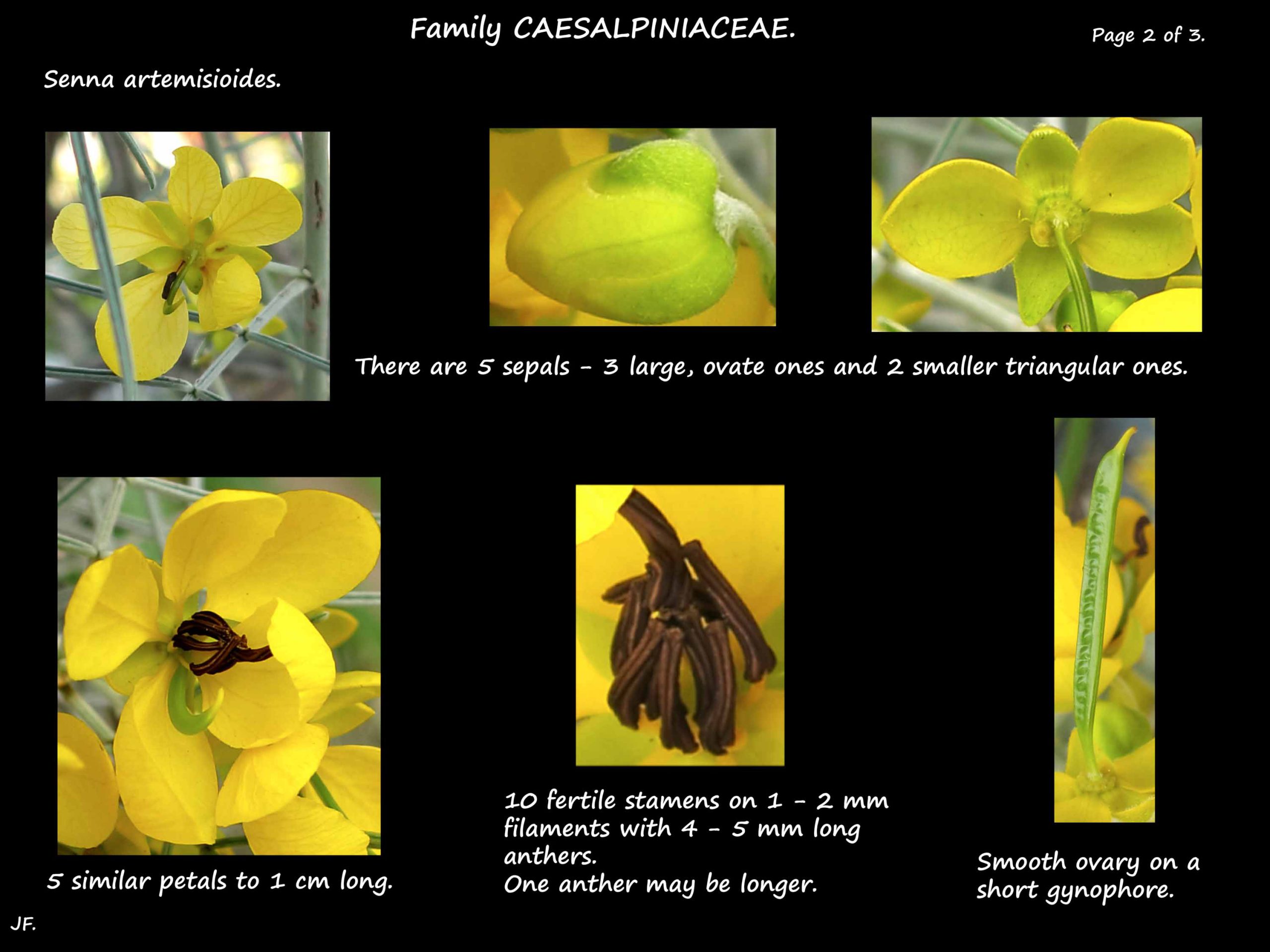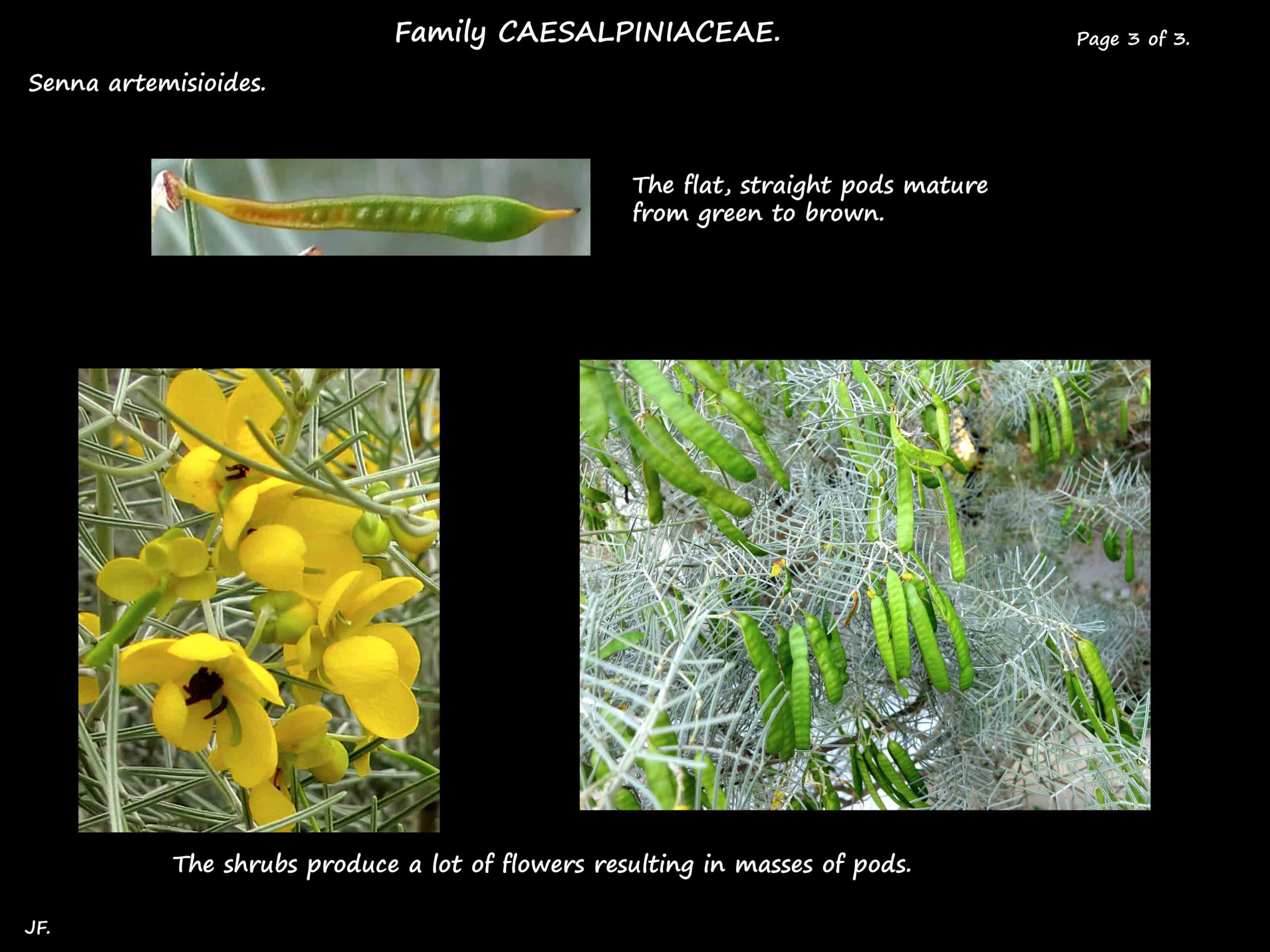Senna artemisioides.
The Wormwood or Silver senna was previously Cassia artemisioides.
It is endemic in the drier areas of much of Australia including Queensland.
There are around 11 subspecies and they all hybridise easily.
They are shrubs up to 3 m high that do not loose their leaves.
The alternate, pinnate leaves are up to 6 cm long.
They are on a petiole up to 1.5 cm long.
The long, narrow stipules at its base fall off early.
Leaves have up to 8 pairs of leaflets up to 2.5 cm long.
Leaflets, about 1 mm wide, have the edges tightly rolled up.
This forms a channel or groove along the upper surface.
The green leaves are covered in dense, pale hairs so they appear grey-green, white or silver.
The extrafloral nectaries between the lower 1 to 3 pairs of leaflets are not on stalks.
The axillary, umbel-like inflorescences have up to 12 bright yellow flowers.
There is a peduncle up to 4 cm long to which the flower stalks are attached.
Each flower is on a stalk 0.5 to 2.5 cm long with a bracteole at the base.
There are hairs, sometimes dense, on the stalks.
The bright yellow flowers are around 1.5 cm across with parts in 5’s.
The sepals are free with 3 broadly ovate to round and 2 smaller triangular ones.
They all have hairs on the outer surface.
The petals, up to 1 cm long, have a narrow base.
There are 10 fertile stamens of slightly different lengths.
The filaments are 1 – 2 mms long and the anthers 4 to 5 mms.
The fruit are flattish pods up to 7 or 8 cm long and 1 cm wide.
They are straight and ripen from green to dark brown or black.
J.F.




